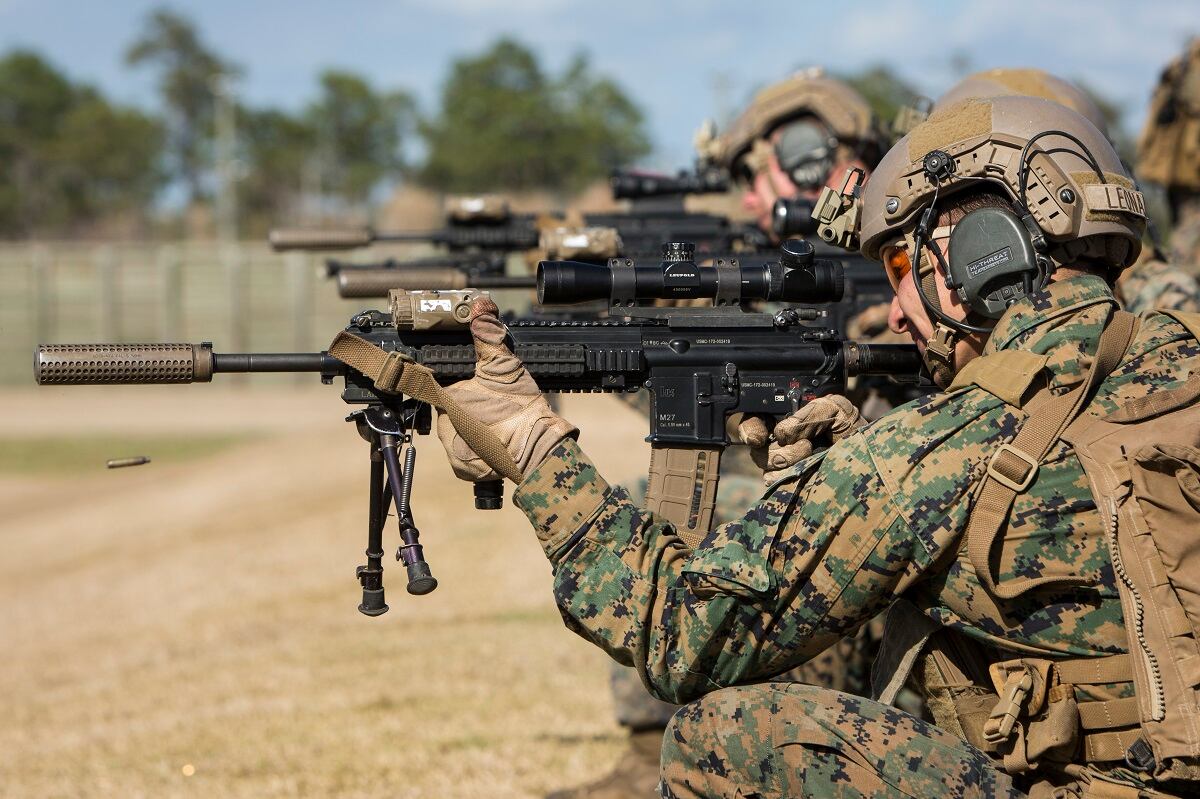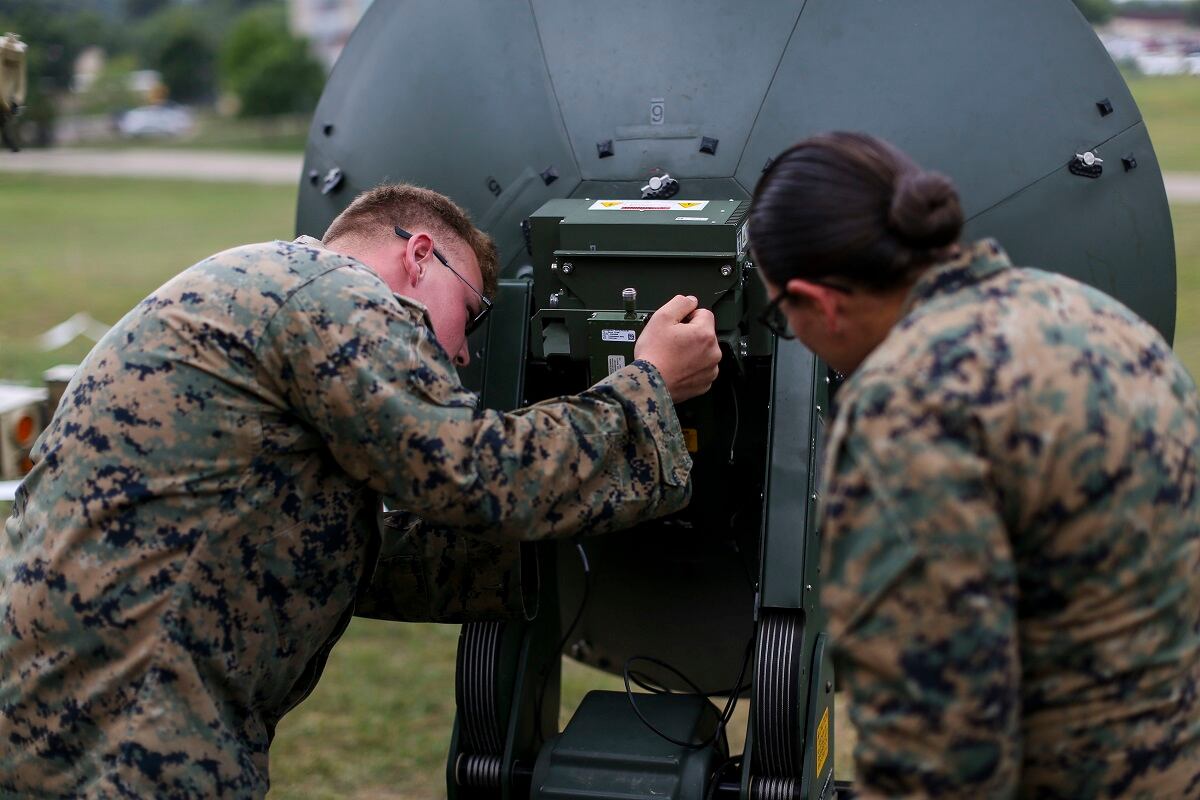Marines recently hit both ends of the communications spectrum with Jarheads in Okinawa using infrared lasers to send large data files without using radio frequencies that easily can be jammed to stateside Marines shooting old-school high frequency comms from Wisconsin to Miramar, California.
Marines with 7th Communications Battalion, III Marine Expeditionary Force at Camp Hansen, Okinawa, tested the “free space optics” system under development by the U.S. Naval Research Laboratory. They transferred data at higher rates by using an infrared laser for ground-to-ground comms, according to a III MEF release.
“The FSO is technology which changes the dynamics of how Marines will support the demand for greater data throughout while not increasing the need for more radio frequency spectrum, an already constrained resource,” said Chief Warrant Officer 4 Jerome Foreman, with Headquarters Marine Corps.
The laser method allows for more users on a single network, which means larger files, images and information can be transmitted more easily than on traditional networks.
RELATED

Sgt. William Holt, with Marine Wing Communications Squadron 18, 1st Marine Aircraft Wing, said though the system’s technology sounds intimidating, it’s an easier setup than many who participated thought.
“When the Marines heard ‘free space optics’ and ‘lasers,’ they got nervous about that. Then when they actually got behind the gear and were able to operate it, it was easier than expected. Now we know any Marine, of any rank, is able to get the gear up and running,” Holt said.
Linda Thomas, a senior researcher with the Naval Research Lab, came to test the system in Okinawa partly because it is one of the “harshest, humid environments” that has highly variable weather.
“It can go from being nice and sunny to torrential downpours. We are looking at how the system operates and handles these conditions and how we can better fulfill the needs of the future Marine Corps,” she said.
The system was tested for ground-to-ground comms but can be sued for ship-to-shore and air-to-ground, Foreman said.
On the other side of the globe, Marines with MAW Group 13 at Camp Douglas, Wisconsin, made an HF comm shot across more than half of the continental United States, more than 1,600 miles to Marine Corps Air Station Miramar, according to a 3rd MAW release.
HF communications has been the backbone of ground radio communications for decades but became a smaller portion of radio comm work with the advent of VHF, UHF and satellite communications systems that came into the force.

“The entire background to completing the shot is the proof of concept that we can send an air trafficking order using high frequency capabilities,” said Stacy Vandiver a MAG-13 field radio operator. “Theoretically this asset would assist us on any type of island hopping campaign we would participate in.”
Using HF for ground-to-air communications gives operators another way to reach disparate assets. And unlike satellite communications and other more sensitive systems, it’s harder for the enemy to track or disrupt, especially since some comm systems are weather dependent.
“This is key in allowing effective communication with the rear,” said Vandiver. “We can instantly let them know what planes flew or didn't fly, how many targets were destroyed and if there are any casualties.”
“Internet and other advanced connections are great and very convenient,” said Vandiver. “However, when those fail, we will always have a means of communication to provide command and control points from the rear.”
Todd South has written about crime, courts, government and the military for multiple publications since 2004 and was named a 2014 Pulitzer finalist for a co-written project on witness intimidation. Todd is a Marine veteran of the Iraq War.





